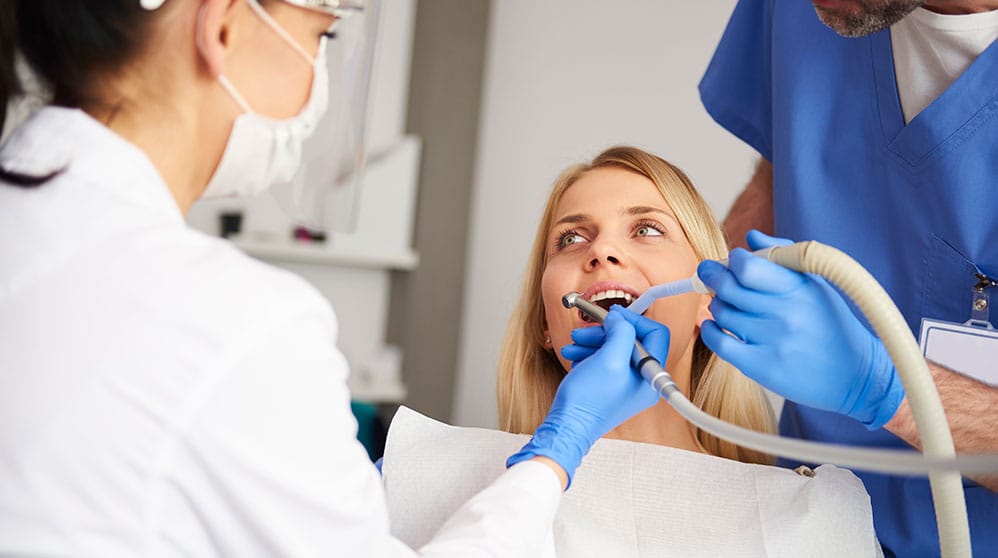Signs and Symptoms of Teeth Cavities
According to the National Institutes of Health, cavities are the second most common health issue in the United States. Cavities are holes in the teeth, which generally occur in the teeth of children, but it can occur at any age. In young people, cavities are a common cause of teeth loss. Some groups are at higher risk of cavities, such as:
- Senior citizens
- Children of lower-income families
- People living in places where the water is not fluoridated
- People with medication that reduces salivary flow
- People with diabetes
- People undergoing radiation therapy
- People who smoke
- People who chew tobacco
- Drug and alcohol users
- People who consume sugary and carbonated drinks
Causes of cavities
Cavities occur because of the presence of bacteria, sugar, and starch in the mouth. It is normal having bacteria in the mouth but it causes problems in the case of improper oral hygiene. Bacteria combine with saliva and starch and result in plaque formation. Plaque is an invisible and sticky substance that accrues quickly. Foods rich in starch or sugar make plaque stickier. If plaque remains on the teeth for a long time, it transforms into a harder substance called tartar. And cavities form when bacteria present in tartar convert sugar into acid. The hard structure of the tooth demineralizes over time and forms a hole in the tooth, and this hole is called a cavity.
Symptoms of cavities
Below mentioned are a few symptoms of cavities:
- Dull pain in the mouth or toothache
- Teeth sensitivity
- Presence of hole or holes in your teeth
- Discolored or chalky white spot on teeth
- Biting pressure
- Bad breathe
- Brown or black spot on teeth
It is easy to determine cavities if they occur at the front part of the teeth. In other parts of the mouth, cavities are not usually visible without an X-ray report.
Prevention of cavities
It is possible to prevent cavities by improving oral hygiene and changing diet. According to NIH, good oral health can be achieved by:
- Brushing twice a day
- Flossing at least once a day
- Receiving professional teeth cleaning northern in every 6 months
- Having dental examinations at the dental clinic every year.
- Reducing sugar consumption
- Rinsing the mouth after eating sticky products
- Minimizing snacking
What Your Oral Hygiene Routine Should Consist Of
The shape and size of teeth vary depending on where they are located in your mouth. These differences let the teeth to do different tasks. Teeth help in chewing and digesting food. They even help in talking and pronouncing different words properly. Finally, teeth provide a shape to the face.
A beautiful smile can be one of the great assets and because of this, it makes sense to pay attention to oral care as much as possible. It is important to visit the best dentist, as soon as you notice the slightest problem in your teeth and gums.
Oral health basics
Generally, oral hygiene routines of people consist of going in front of the bathroom mirror in half-sleep, barely brushing teeth, and flossing once in a while. Well, that’s not enough for maintaining good oral health. In order to enjoy healthy teeth and gums, you need to follow a proper oral care routine. You can consult with the dentist regarding this, and improve your oral care practices because the way to the healthy body goes from the mouth.
It’s never too late to start good practices. What if your teeth are not in a healthy condition now! You can always improve oral health by making positive changes in your lifestyle and diet.
Brushing Your Teeth
- It is important to brush your teeth for at least 5 minutes for proper cleaning. Spend at least 30 seconds on each quadrant of your mouth.
- For thorough cleaning, you need to hold your brush at a 45-degree angle with gums.
- Brush at least twice a day.
- Change your toothbrush every month. And use a soft-bristled brush.
- Use good quality toothpaste.
Flossing your teeth
- Floss at least once a day.
- Floss your teeth at the back of your mouth as well.
- Make use of 45 cm floss. Wrap the floss on both fingers for a better grip.
- In order to avoid gum damage, follow your teeth curve.
Rinsing Your Mouth with Mouthwash
- After brushing and flossing, rinse your mouth with mouthwash.
- Keep mouthwash in your mouth for 30-40 seconds, and then spit it out. You will feel fresh.
Cleaning Your Tongue
- Clean your tongue at the end.
- Put a little bit of toothpaste on the tongue and clean it using a toothbrush.
So, these are some oral care tips that you can follow to maintain good oral hygiene. Moreover, you should visit the best dental clinic for regular check-ups and cleaning.
